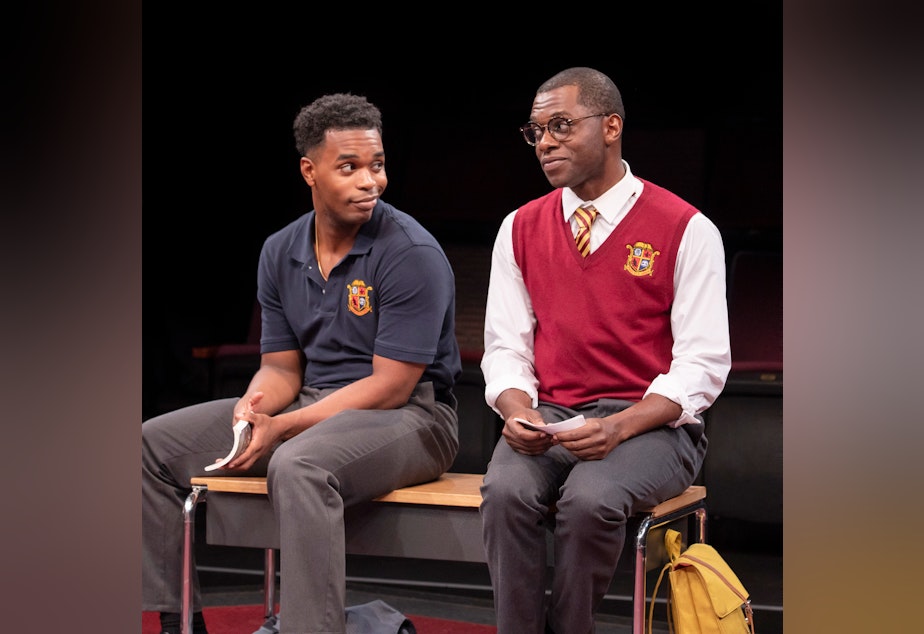The uncomfortable, guilty, amazing experience of 'Choir Boy': Reporter's Notebook

Let me start by saying “Choir Boy” was an amazing experience. The writer, Tarell Alvin McCraney, crafted a story that takes audiences into the world of Pharus Young, a 17-year-old queer Black boy in his senior year at the fictional Charles R. Drew school for boys. It depicts Young’s struggle to balance school, relationships, and his love of singing in the choir — all while being targeted by peers due to his sexuality.
RELATED: 'Choir Boy' explores life, love, and queer identity for Black teens
Seattle’s ACT Theatre provides a unique experience for this play. Due to the stage being circular, and situated in the middle of the audience, the action takes place in an arena that director Jamil Jude likened to a “boxing ring.” But for me, sitting in the front row, my attention would often drift to the audience members sitting across from me. We were close enough for me to see their faces, and when the characters on stage — all except one being Black — hurled racial and sexual slurs at each other, I was often reminded that I was one of few Black spectators in the audience.
This experience was different than being at a concert where white people rap lyrics to songs that say the n-word. In those situations, which are also uncomfortable at times, the crowd blends together and its hard to decipher who specifically is saying the word. That night at the ACT Theatre, I was in a room full of white people, watching as a young Black boys call each other the n-word, and call one specific boy the f-word, in a very abusive manner.
For me, these moments felt even more heavy seeing that the institution portrayed in the play and the actors involved, were all Black, and the audience in the fishbowl was almost exclusively white — and dead silent. So, every single slur cut like a blade and I couldn’t escape the feeling that the rest of the audience was now allowed into a space that would typically be exclusive to Black folks.
The Drew school was just like my school growing up. The way those kids spoke to each other is how we spoke to each other, and even when the n-word was used in a nonconfrontational way, it still felt wrong to have it used so freely in the presence of that many people who were not Black, people who may have never been privy to these types of conversations. But I couldn’t stop my eyes from gazing across the crowd and looking into the eyes of all the people who, perhaps for the first time, were getting a glimpse into my childhood, which made me feel like I was in the fishbowl and on display along with the actors.
I must also admit that the play made me feel guilty. Maybe that’s why the mixed-crowd got to me in the way that it did.
I spoke to director Jamil Jude, who is also a heterosexual Black man, about how he processed elements in the play. Like me, Jude didn’t have a gay friend until college. I knew gay people existed, but I never had a relationship with a gay person until I was able to escape the false-teachings of my youth. Looking at the youth on stage, and seeing how bad Pharus needed a friend, needed a peer to be in his corner, made me feel guilty for the times when I could have been that friend but never stepped up.
The relationship between Pharus and his newfound friend AJ was one of the most important in the play. It showed how valuable it is to have a friend — someone you can talk to, someone who can see past differences and accept the person you are.
For many people, the takeaway from this play will be a reminder to allow Black boys to be boys; to not force manhood on us too soon, but to allow us space for adolescence, curiosity, and self-discovery. My takeaway is an additional reminder to be present in the life of young Black boys, especially queer Black boys. It’s our responsibility to destigmatize their existence.

